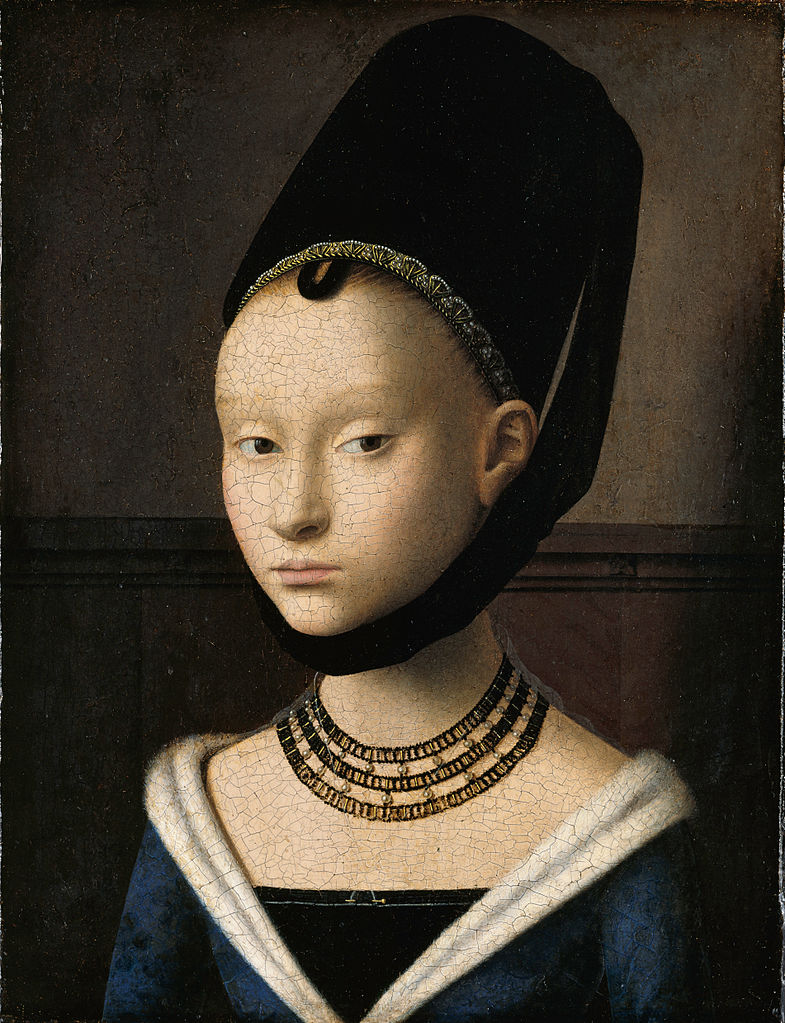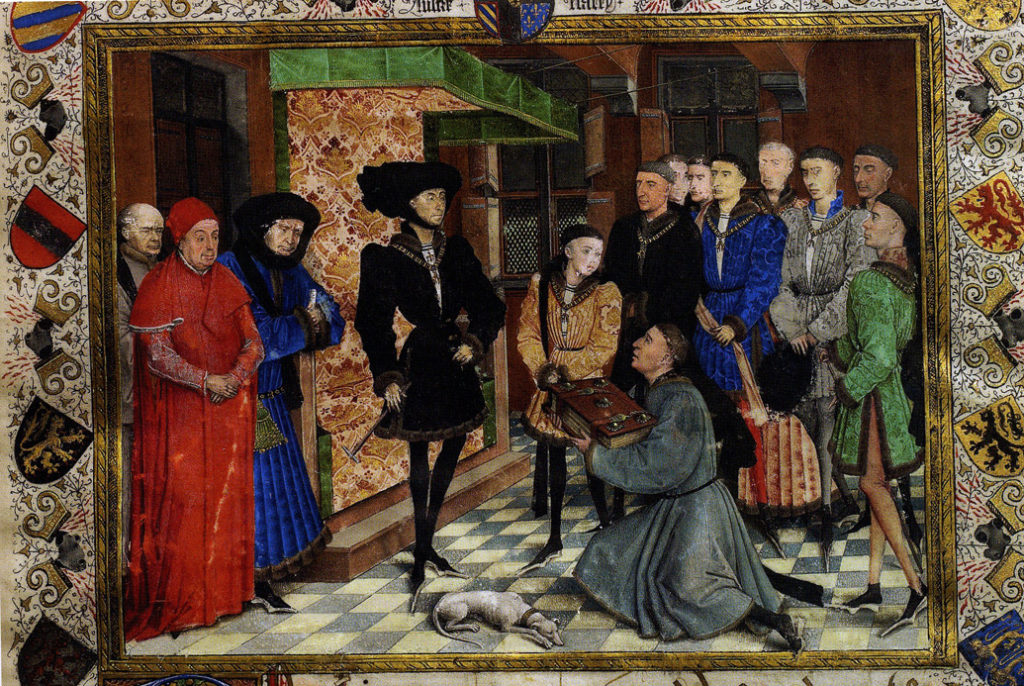 When I traveled to Berlin earlier this summer, I spent about four and half hours at the Gemaldegalerie (not enough time)–a full hour of which was spent looking at Portrait of a Young Girl (1470) by Petrus Christus. It’s the subject of the “Masterpiece” column I wrote for The Wall Street Journal, and was published on Saturday under the headline The Girl with the Sidelong Glance (at right). (If you are not a WSJ subscriber, you can read it here.)
When I traveled to Berlin earlier this summer, I spent about four and half hours at the Gemaldegalerie (not enough time)–a full hour of which was spent looking at Portrait of a Young Girl (1470) by Petrus Christus. It’s the subject of the “Masterpiece” column I wrote for The Wall Street Journal, and was published on Saturday under the headline The Girl with the Sidelong Glance (at right). (If you are not a WSJ subscriber, you can read it here.)
It is a great picture, clearly, but I wouldn’t have noticed all the details without the help of Stephan Kemperdick, the museum’s curator of Early Netherlandish and German Painting. He spent most of that hour with me, and two things in particular come to mind that I might have missed without him: the very thin “tissue” draped around her shoulders (easy to see around her neck, but not across her bodice) and her unmatched eyelids. He also pointed out the geometry of the painting, the molding that aligns with her mouth and the vertical axis, neither of which I mentioned. (I read catalogue and book excerpts about her, too.)
As if to demonstrate the portrait’s drawing power, while we were talking, comparing it with three nearby van Eycks, a man came into the gallery with a folding stool. Taking no note of us, he plopped his stool right in front of the painting and sat there staring at it for at least five minutes. And then he got up and left, cursorily looking at other works.
Some people are bothered by that heavy strap around her neck holding the headdress in place. Christus used it as a pictorial device, as my article notes, but Kemperdick did not know of another like it in paintings for a female, though he did tell me that a picture of Philip the Good shows something similar. I found that manuscript page, painted by Rogier van der Weyden, which is the frontispiece to the Chroniques de Hainaut held in Royal Library of Belgium–it’s at left (for a larger image, click on it and click again on the next page).
Still, the girl is mysterious and neither Kemperdick nor any of the written materials I consulted knew anything about the loop in the bonnet. Imagine my surprise–and delight–when a read wrote to me this morning saying that long ago she had been told by “an expert” that the velvet forehead loop advertised that she had a dowry of some known quantify–perhaps “10..thousand? hundred? pounds? gold coins?”annually.
Can we solve that mystery? Does anyone reading this know about the loop?

